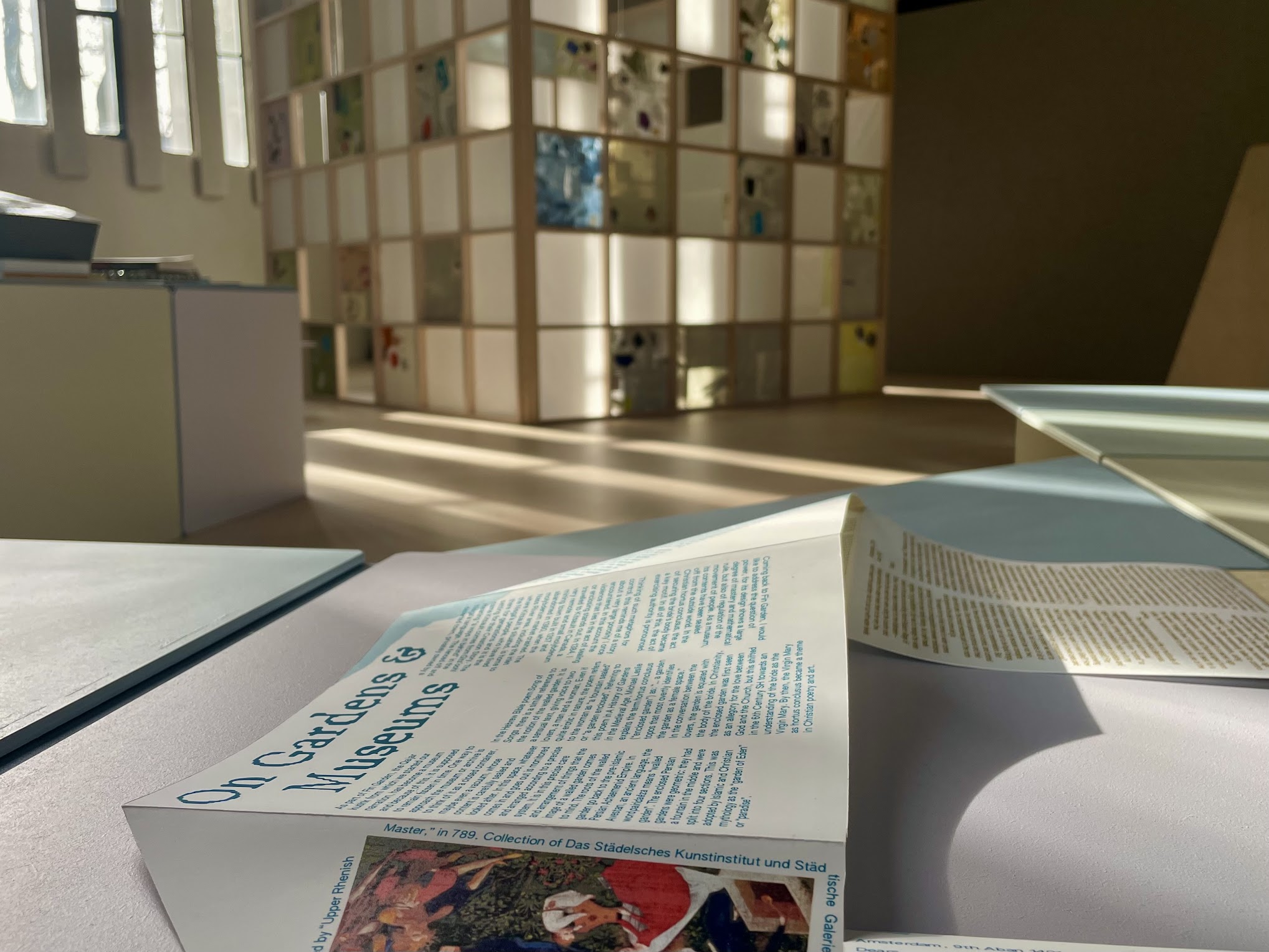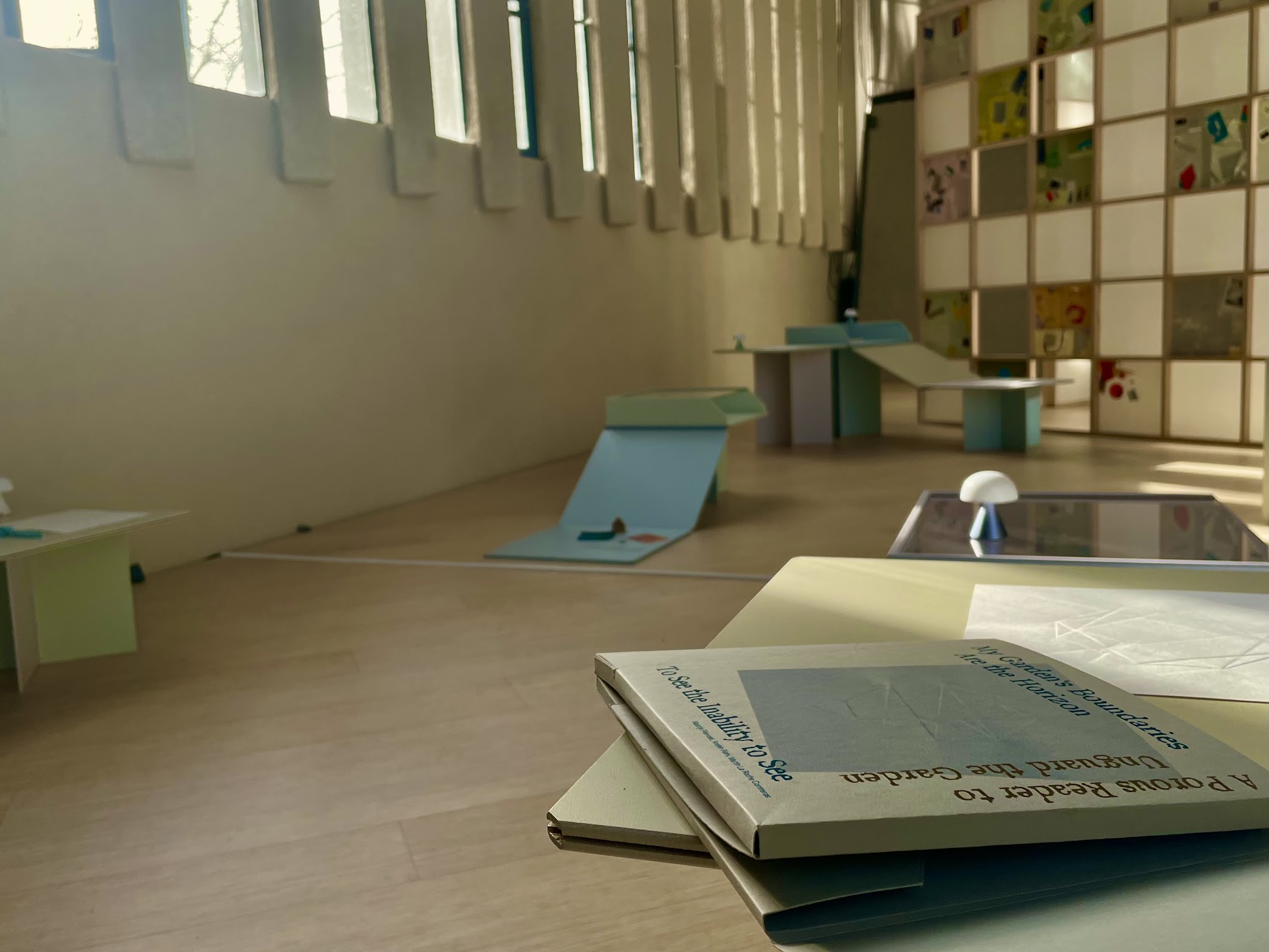MY GARDEN’S BOUNDARIES ARE THE HORIZON
MY GARDEN’S BOUNDARIES ARE THE HORIZON
Through the Open Garden, among other solutions, we explore the different assemblages that constitute how we think about food and food heritage. When we think about assemblages, we point to the interrelation of beings – animate and inanimate, human and non-human. Within such interrelations, all the different elements constitute each other and have the power to influence and change one another. This prompts us to see that food heritage and cultural heritage are always in change. We look for such prompts and possibilities of entering different assemblages ourselves at art exhibitions. Justyna Jakubiec visited the exhibition My Garden’s Boundaries Are the Horizon, which was on view at de Appel contemporary art centre in Amsterdam.
The exhibition unfolded from the work of To See the Inability to See – a collective built by Arefeh Riahi, Martin La Roche Conteras and Maartje Fliervoet, which formed in 2019 in de Appel’s archive. The collective has become recognisable for creating triangular books, written pieces that resist the notion that a book should fit a library shelf. The collective has continued this effort and developed a foldable book, a folding/unfolding object/book entitled My Garden’s Boundaries Are the Horizon: A Porous Reader to Unguard the Garden that has unfurled into the exhibition – “a repertoire of objects, gestures and events that expands its content into the space and in relation to other bodies, such as those of readers, visitors and artworks” (de Appel Amsterdam, “My Garden’s Boundaries Are the Horizon,” link).
The practice of To See the Inability to See unfolds from a prompt to rethink the boundaries that spaces introduce – boundaries that are material and immaterial, that involve power structures and influence how we move about. To do so – and which is very much the case for My Garden’s Boundaries Are the Horizon – the collective engages with the processes of archiving as those that concern that which is known, unknown and impossible to categorise. For the publication of the book that has given rise to the exhibition, the collective explored stories that surrounded traditional Iranian buildings, in particular the Fin Garden in Kashan and hashti – the space of the house one enters from the street and in which one’s relationship with the very house will unfold – whether one will be welcomed to the private parts of the house, or whether one will remain an outsider. The space, usually built in the form of an octagon, would function as a mediating space between the outside and the inside – and the same happens to the book, the companion to the exhibition, that, upon careful unfolding, can materialise in the shape of an octagon.
It is precisely the question of the inside and the outside, of the accessibility and inaccessibility, of openness, that this exhibition asks in a way most relevant for us in CONVIVIUM. The folding/unfolding book touches upon various notions and relationships – secrets, resistance, boundaries, porosity, and the entanglement between gardens and museums. Departing from one of the interpretations of the museum or archive as a “closed container” (My Garden’s Boundaries Are the Horizon book), the collective reminds us of hortus conclusus – a walled garden, an enclosed garden, a space that connotes a paradise that is accessible only the ‘worthy’ ones. Such gardens, nevertheless, would exclude not only humans but also more-than-humans, due to the human-made order and harsh rejection of wild nature according to which they would be designed.
On the other side of the spectrum, as we follow the unfolding of the book, there is Derek Jarman’s garden in Dungeness, England, a project the artist, filmmaker, gay rights activist and gardener decided to materialise after hearing about his HIV infection. The garden became a sanctuary for Jarman, showing that growth can happen even in one of the harshest environments. At the same time, we can say that it became an intriguing form of commenting on the walled garden. The garden in Dungeness, where fences do not exist, can be seen as a form of radical openness unfolding. After all, it is the quote from Jarman himself that became the title of the exhibition: “My garden’s boundaries are the horizon” (exhibition publication).
As we search for assemblages and ways of storytelling, thanks to this exhibition, we can ask ourselves: How is accessibility, an openness materialising in and through a garden? Is it only a question of physical accessibility, but also—and perhaps most importantly—a question of immaterial accessibility?





